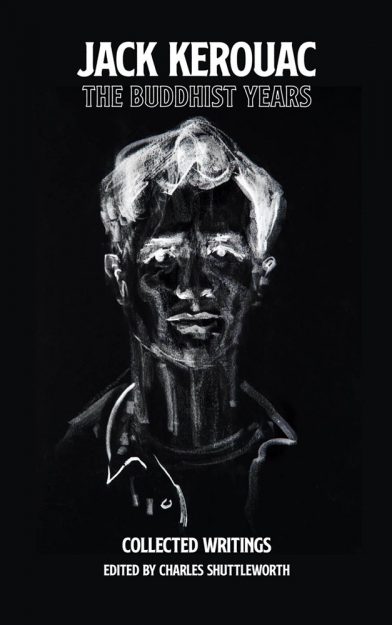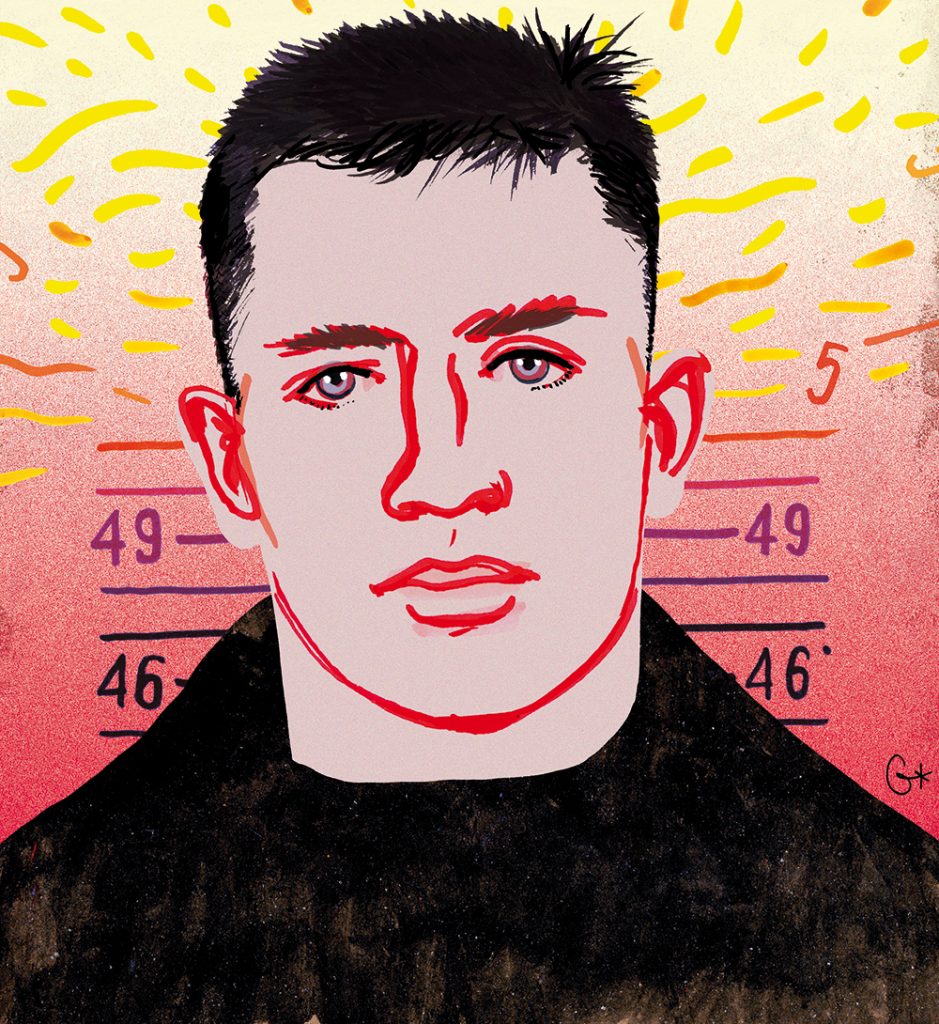Before becoming the voice of the Beat Generation, Jack Kerouac was just another desperate seeker in an existential crisis. Then Buddhism struck him like a lightning bolt. In 1953, at 32, he was hospitalized for a painful bout of thrombophlebitis (inflammation of a vein). Heartbroken from relationship failures and devastated by publishers rejecting his manuscript that would become On the Road, he was an alcoholic and suicidal. He reread Henry David Thoreau’s Walden and was hooked by “Hindoo” philosophy references. He plumbed the library for books on “Oriental” religion, and when he opened Ashvaghosha’s Life of Buddha, the story of the Buddha’s renunciation leapt from the pages and struck him in the heart. Kerouac devoted himself to studying and spreading Buddhism for the following four years. The fruits of that labor resulted in the immensely influential novel The Dharma Bums (1958) and two manuscripts not published until long after his death: a biography of the Buddha and a nonfiction manuscript of Buddhist thoughts and teachings called Some of the Dharma.

The Buddhist Years: Collected Writings
By Jack Kerouac, edited by Charles Shuttleworth
Rare Bird Books, 2025, 296 pp., $35.00, hardcover
Over fifty years after his death, Kerouac’s unpublished musings from this time have been published in a new book, The Buddhist Years: Collected Writings, edited and introduced by Kerouac enthusiast Charles Shuttleworth. Shuttleworth is a teacher, writer, and editor for Sal Paradise Press (formed by the Jack Kerouac Estate), and he claims these pieces show Kerouac “at his earnest, soulful best.”
In several pieces in this volume, Kerouac writes about the moment he came into contact with Buddhist scripture. Until then, his life was “a puzzle, suffering was my constant activity, and the knowledge of death was a knife in my throat.” Then he reads that suffering is self-caused by craving, and that craving could be eradicated through meditation and following the Buddha’s path. As he explains in his characteristic style in “On the Path,” a gem of the collection, “Thought after thought, torment after torment, night after night of human loneliness when it rains on a cold night—fears—all poof! ‘They don’t even exist—They are illusions of the mortal mind.’ ” When he read that the suppression of suffering can be achieved, he felt as many of us think when first hearing the dharma: It’s not something new we’re learning, but it’s reminding us of wisdom we somehow already possess. As Kerouac expresses in “Long Night of Life,” another of my favorites of the collection, “Now that I know, I know that I always knew.” He was dazed, amazed—scriptured. Soon, he knew what he needed to do: “Get you to a quiet place in the woods, sit down under a tree, stop, realize, and slip into Nirvana from whence you originally came, perfect like you always suspected you were.”
Like most of us, Kerouac quickly finds this is easier said than done. At the time, several intellectuals had already read and written about Buddhism; Kerouac is significant among them because he set about applying dharma to his life—he was already used to life on the road, but now he’d live like a wandering religious hermit, a sramana. A few pieces are journal entries listing the items Kerouac needed to become his own kind of bhikkhu. Several show the inner struggle of trying to live like a Buddhist while still being enslaved to the defilements of the mind, which want to roll in sensual pleasures, unknowingly perpetuating samsara. In “The City and the Path,” which continues the story of the characters from his then only published novel, The Town and the City, Kerouac says of his alter ego Peter Martin: “Highest Perfect Wisdom was his goal, Supreme Reality was his guide, Holy Enlightenment was his strength.” But he adds, “For a young man, and an American at that, the renunciation of beautiful girls, the sight of them, the thought of them, let alone the possession of them, is almost impossible for any length of time.”
I’m not sure if Kerouac ushered in a new consciousness, but he certainly exposed countless people to Buddhism.
For those of us who read that passage and judge it sexist, let’s recall that in the first chapter of the Anguttara Nikaya (Numerical Discourses), the Buddha says, “No other form do I know, O monks, that so persists in obsessing the mind of man as the form of a woman.” For women feeling left out, the Buddha continues, “No other form do I know, O monks, that so persists in obsessing the mind of a woman as the form of a man.” That is to say, some pieces in The Buddhist Years show Kerouac struggling with exactly what the Buddha indicated: Just because we know desire is the cause of suffering doesn’t mean we suddenly stop desiring.
Yet before those more interesting pieces, the early selections of The Buddhist Years reveal Kerouac obsessed with his birth. Again and again, we go to March 12, 1922, when the snow was melting and the red sunlight poured into the Kerouac house on Lupine Road in Lowell, Massachusetts, near the Merrimack River. It’s like watching a musician start and restart a performance a few times. With each retelling, the presence of Buddhist terminology grows. First, a mention of emptiness, then causes and conditions; “imaginary blossoms in the air” shows he’s read the Surangama Sutra; “anxieties of karma” shows he’s making these concepts his own, internalizing them into his worldview, expanding God to include Buddha, widening salvation to include samadhi.
Like most of the collection, these pieces are sketches of autobiographical fiction, fragments, drafts of sections that later made it into Visions of Gerard, The Subterraneans, Book of Sketches, and Book of Dreams. They’re like an artist’s preliminary drawings of paintings. But why the repetition of his birth story? It feels like he’s trying to get at something. In several early pieces, for example, he has variations of this profound line describing his conception: “The Infinite had woven itself a new limited wonderer trapped inside a burden of flesh at the dissolution of which years later in the sweet hour of death it would re-admit to its imageless ecstasy which is not only eternal like ‘God’ but I am ‘God’ as you are who am me as I am you.” In later pieces, he writes from the perspective of himself before he was born, told by “unseen tathagatas” to not do it, “to go back.” With the many versions of his birth and his “pre-birth bliss,” it seems he’s trying to understand what happens before birth—so he’ll know what will happen after death.
In any case, these repetitions in various journal entries make sense for a writer trying to figure things out, but for a reader, they become wearying. And any potential reader should be warned that though these writings are indeed from Kerouac’s Buddhist years, they’re not necessarily his Buddhist writings. For instance, there’s “Legend of Three Houses,” about seventy lifeless pages of a (thankfully) abandoned novel written in his earlier Thomas Wolfe–inspired vein but with scattered Buddhist terminology. It doesn’t work. And, to be honest, not much in this collection does—neither individually nor together. For one thing, unlike Some of the Dharma, it’s not a manuscript Kerouac ever meant to publish; it’s a bunch of fragments, some typed and others scrawled, none complete.
These pieces also don’t work because it wasn’t until Kerouac developed his friendship with Gary Snyder, someone who knew more about Buddhism than he did, that he shifted the focus of his Buddhist writings from himself to someone else, and something clicked. The Dharma Bums succeeds because Snyder’s character, Japhy Ryder, is more advanced in Buddhist study and practice than Kerouac’s character, Ray Smith. The reader learns along with Ray, not from him.
In his introduction, Shuttleworth captures this irony: During Kerouac’s Buddhist years, his goals were personal salvation and to convert others. In the short term, he was more successful with the former effort: “Buddhism did offer him some psychic relief during an exceedingly painful period,” but few people listened when he spoke about Buddhism—most dismissed him.
“The irony,” Shuttleworth notes, “is that in the long term the opposite occurred: He was unable to live up to Buddhist precepts, re-embraced Christianity, and died alcoholic; whereas, through the influence of The Dharma Bums in particular, he had a major effect in exposing people to Buddhism, ushering in a new consciousness that took hold in the Sixties.”
I’m not sure if Kerouac ushered in a new consciousness, but he certainly exposed countless people to Buddhism, including me, in the ’60s and beyond. In college, I had heard about Buddhism, but it wasn’t until reading The Dharma Bums in the summer of 2000 that I was motivated to try meditating, and dove into Buddhist practice—sloppily, just as Kerouac himself embraced it. And I know I’m just one of many American Buddhists whom the novel affected in this way.
Though The Buddhist Years isn’t as artistically or spiritually developed as The Dharma Bums or Some of the Dharma, it doesn’t have Kerouac’s naive, inflated claims about his ability to teach or enlightenment status (such as seeing himself as “a junior arhat”); here, he’s enthusiastic but humble. We see him as an earnest fellow seeker, trying to incorporate his newfound wisdom into his art.
Thank you for subscribing to Tricycle! As a nonprofit, we depend on readers like you to keep Buddhist teachings and practices widely available.
